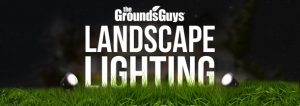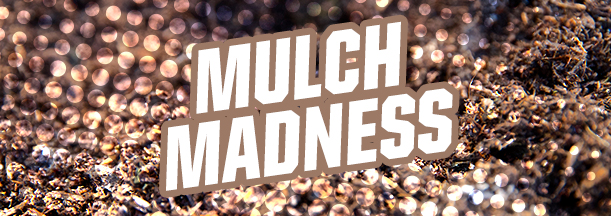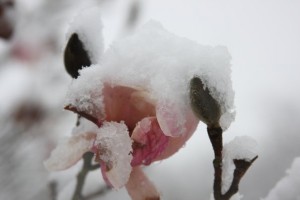
The way your home looks in the day and how it appears at night are completely different. If you want more than a standard porch light to illuminate your home after dark, consider installing landscape lighting. Ideal for both residential and commercial applications, landscape lighting can shine your property in a whole new light, which provides many benefits you may not have thought of before. Here’s a quick guide to planning your landscape lighting.
Reasons to Install Landscape Lights
Before you start your landscape lighting project, understand the advantages you can enjoy once the exterior of your property is illuminated at night.
Curb Appeal
Strategically placed lights can accent certain architectural features of your home, making them visible even at night. Spots of light along pathways and in the garden also make your home look more inviting. Lights pointed upward at your favorite tree help you make the most of your landscape even after dark.
Functionality
If you put a lot of effort into making an outdoor living space in your back yard, there’s no need to stop the party just because the sun goes down. With sconces on the wall to illuminate the deck, pendant lighting on the ceiling to brighten the porch, and underwater pool lights, you can enjoy spending time outside in the evenings without sitting in the dark.
Home Security
A home or business with a brightly lit exterior is less appealing to a thief or vandal than a dark one. Security lights and motion sensors make it harder for criminals to approach the building without being seen, which helps make your property more secure.
Safety
Lights installed on the perimeter of paths and along stairs make them more visible, which decreases the chance of tripping and falling. Lighting along the driveway also makes it easier to pull in without difficulty.
Powering Your Outdoor Lights
If you want to enjoy the effect of outdoor lights without substantially increasing your energy bill, it’s worthwhile to look into energy efficient fixtures. Even then, landscape lights still consume some amount of energy and require a power source.
Circuit Box
For bright security lights or those used to illuminate large areas such as the driveway or deck, you need an electrician to wire the 120-volt fixtures directly to your circuit box. Then any outdoor wires must be buried at least 18 inches below ground.
Transformers
Low-voltage lights manage just fine when they’re powered by a transformer. Purchase one with a rating slightly larger than the total wattage you need to power your new landscape lights. Most residential-grade transformers must be installed outside. Commercial transformers, which you can also use in a residential setting, can be installed inside. For help installing the transformer and running cables, rely on a professional landscape lighting company.
Solar Panels
Solar-powered outdoor lights cost you nothing to operate because they soak up the sun’s energy all day and use this power to operate the lights at night. Low-voltage lights used along paths and in garden beds are best for this application. Make sure the solar panels, which are often attached to the fixtures themselves, receive full sun throughout the day.
Types of Outdoor Lighting
You have many options for lighting your property. As you consider your options, try simulating uplighting, downlighting and spotlighting with a powerful flashlight. This lets you sample the effect of lighting different areas of your home and garden so you get an idea of what the real thing will look like.
Lanterns and Sconces
These are particularly popular for front porches and back decks and patios. Lanterns and sconces mount to the wall and shine light over a broad area. They are examples of 120-volt fixtures that must be wired to a circuit box. Fixtures with frosted or shielded glass help reduce glare.
Pendant and Hanging Lights
120-volt pendants hanging from the ceiling provide an additional option for lighting an entryway, porch or covered patio. Then, low-voltage hanging lights strung through trees or the beams of a pergola add charming accents to the back yard.
Recessed Lights
You can install these lights in the eave overhanging your deck or garage door. Recessed lights provide downlighting while the fixtures themselves remain mostly hidden from sight. They are typically 120-volt fixtures, though smaller low-voltage recessed lights can also be used to light railings, posts and built-in deck furniture.
Floodlights and Spotlights
Available as both 120-volt and low-voltage fixtures, floodlights illuminate a wide area, such as the driveway, side of a building or tree. Spotlights are similar, but they shine a narrower beam to highlight a specific object, such as a garden statue or shrub.
Path and Garden Lights
Low-voltage lights are all you need to shine a small pool of light on a sidewalk or paved path, lighting the way to prevent tripping when it’s dark. Garden lights are similar and provide accent lighting in your flower bed.
In-Ground Lights
These are buried in the ground and covered with a weatherproof lens. They come in both 120-volt and low-voltage varieties and can be angled slightly to illuminate a wall, fence or tree.
Security Lighting
All landscape lights provide some degree of security by wiping out shadows on your property. Lights specifically made for security purposes are often installed overlooking the driveway or back entrance. These are typically very bright and only trigger when they sense movement, remaining illuminated for only a minute or two before turning back off again.
We provide installation, repair and replacement services for residential and commercial landscape lights. We can help you install and set light timers, replace burned out bulbs, repair and rebury below-ground wiring, realign tilted fixtures, manage transformers, and handle every other aspect of your landscape lighting project.
If you need help making your outdoor lighting idea a reality, please contact us
today. We can help your property look its best, even after dark, with professionally installed and maintained landscape lights.









